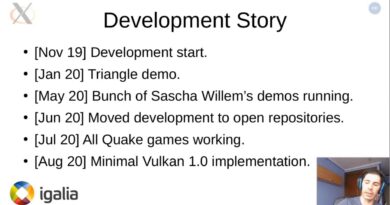Cluster in Kubernetes
In Kubernetes, a cluster is a set of nodes that work together to run containerized applications. It’s the foundation of the Kubernetes architecture and provides the environment to deploy, manage, and scale containerized applications. Let’s break down the key components and concepts related to a Kubernetes cluster:
Node: A node is a physical or virtual machine that runs containerized applications. Each node in the cluster has the necessary services to manage containers and communicate with other nodes.
Master Node: The master node is responsible for managing the cluster. It controls the scheduling of applications, monitors the overall health of the cluster, and manages communication among nodes. The master node consists of several components, including the Kubernetes API server, controller manager, scheduler, and etcd.
Worker Node (Minion): Worker nodes are where containers are deployed and executed. They run the necessary services to communicate with the master node and manage containers, such as Docker or containerd.
Pod: The smallest and simplest deployable unit in Kubernetes is a pod. A pod represents a single instance of a running process in a cluster and can contain one or more containers. Containers within a pod share the same network namespace, allowing them to communicate with each other using localhost.
Namespace: Kubernetes supports multiple virtual clusters within the same physical cluster using namespaces. Namespaces help in organizing and isolating resources, allowing different teams or projects to use the same cluster without interfering with each other.
Controller: Controllers are responsible for ensuring that the desired state of the cluster matches the actual state. They manage the lifecycle of pods, scaling applications, and maintaining availability. Examples of controllers include ReplicaSet, Deployment, and StatefulSet.
Service: A Kubernetes Service is an abstraction that exposes a set of pods as a network service. It provides a stable IP address and DNS name to access the pods, allowing for load balancing and automatic service discovery.
Cluster Networking: Kubernetes requires a network overlay to enable communication between pods running on different nodes. Various solutions, such as Calico, Flannel, and Weave, provide networking capabilities for Kubernetes clusters.
etcd: etcd is a distributed key-value store that stores the configuration data of the cluster. It is used by the master nodes to store and retrieve the state of the entire cluster, ensuring consistency and fault tolerance.
In summary, a Kubernetes cluster is a collection of nodes (master and workers) that work together to manage and run containerized applications. The master node controls the overall state and coordination of the cluster, while worker nodes host and execute the containerized workloads. The cluster’s architecture ensures scalability, resilience, and efficient management of containerized applications.
#docker #devops #kubernetes #aws #linux #python #jenkins #cloudcomputing #git #cloud #devopsengineer #coding #stevedore #ansible #java #programming #azure #javascript #containership #github #longshoreman #developer #technology #container #ilwu #craneoperator #portoflb #portoflongbeach #software #googlecloud #linux #kalilinux #linuxfan #linuxmint #linuxuser #archlinux #linuxwindows #gnulinux #kalilinuxtools #linuxubuntu #linuxserver #linuxgaming #linuxindonesia #linuxlover #redhatlinux #linuxcnc #linuxsetup #linuxgamer #ubuntulinux #linuxisbetter #linuxhosting #linuxmasterrace #steamforlinux #kali_linux #linuxadmin #linuxmemes #quirolinux #kalinux #linuxtips #manjarolinux #linuxkernel #debianlinux #linuxfoundation #linuxdistro #kalilinux2 #linuxmeme #embeddedlinux #linuxday #cloudlinux #linuxfun
by Information & Technology
linux foundation



